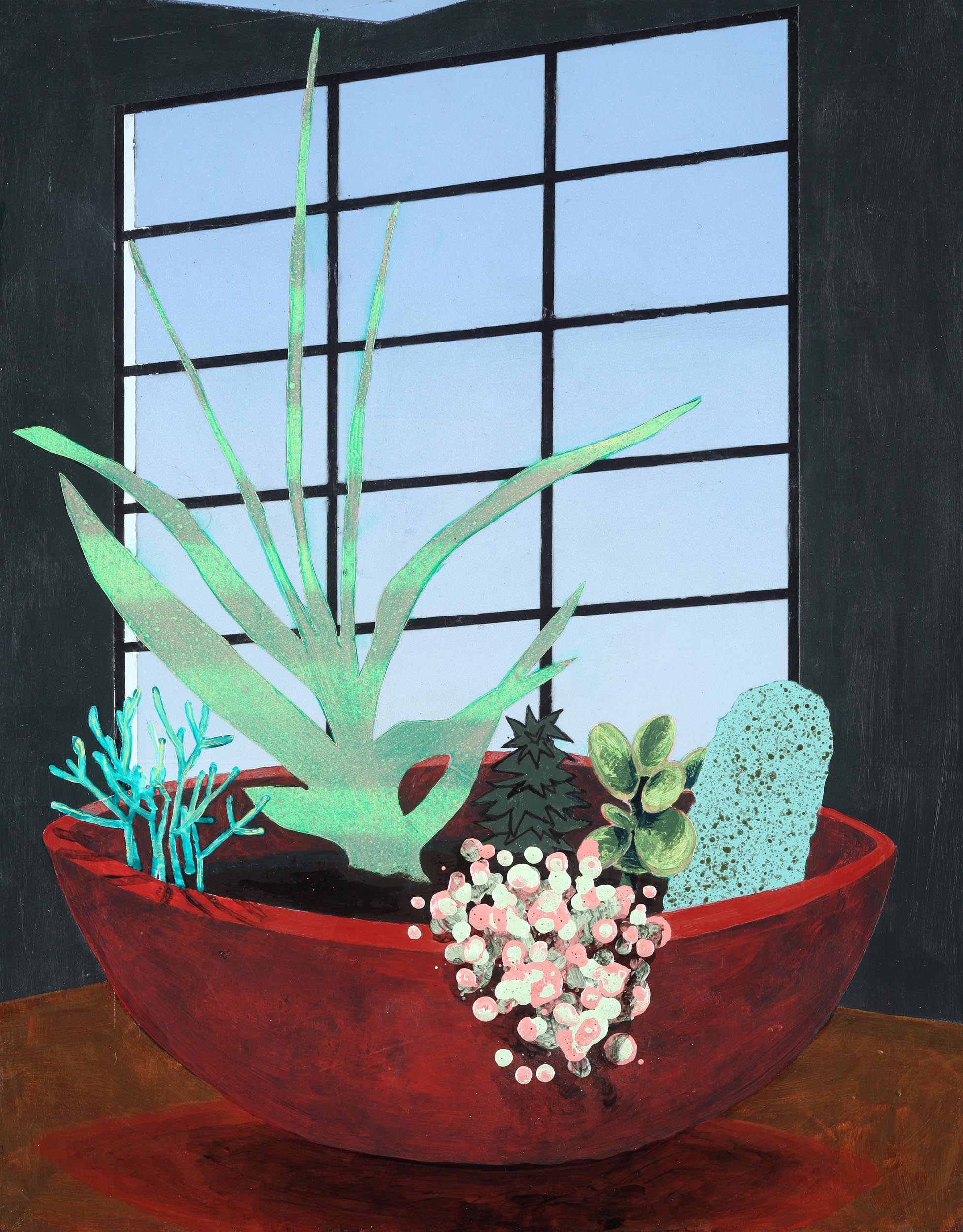
Latin Roots iii, 2019, Acrylic, spray paint, paint marker on panel, 14 x 11 inches Sunset Reflection, 2019
To start, tell us about yourself. What’s your background & how did you get into making art?
I have been making art ever since I could hold a pencil. My dad is an artist and my mother was a school teacher so ever since I was very young I was given art materials to work with, in fact I have kept a sketchbook since I was in third grade. It is kind of cool to flip back through this record from time to time and revisit drawings and ideas that I was engaged with from different times in my life. I really didn’t start thinking about art as a possible career until I was in High School, I had an amazing English teacher my junior year that really encouraged my arty, non traditional responses to her assignment prompts. But during this time my creative outlet was photography and I was intent on making a life as a photographer. It wasn’t until I started at the University of Texas at Austin that I made a real move to becoming an artist. I started UT as a photojournalism/pre-med double major and subsequently lost interest in both photography, biology. I became unfocussed in my study and almost failed out of college. As a way to boost my GPA an academic advisor asked me what I was truly interested in and flippantly I mentioned that I had been drawing ever since I was a child and he suggested that I take a drawing class for non majors as a way to boost my GPA. It was during this class taught by Dr. Rebecca Brooks that changed my life. She illuminated for me a couple of things that make a good artist and one of them was having a lot of ideas, which I always had, about my work as well as the work of my peers as sussed out in critique. The other thing she illuminated was my facility in drawing, almost daily she would ask why I was not an art major? or when was I going to change my major to art. After a while I started to listen and actually hear her. Toward the end of that semester I discussed this possible move with my folks, fearing that they would encourage me to the contrary but they didn’t, they were very supportive. I changed my major the next semester and never looked back. Ultimately ended up graduating with honors in the School of Fine Arts, I received a BFA and in hindsight I am very grateful for Dr. Brooks, she saved my life!
What are you currently working on? Describe your most recent body of work.
I am currently working on some paintings and collages that build off of my last body of work. I am continuing to create modernist, minimal interiors from memory. The works draw on previous themes of the interior motif that continues to play host to a range of potential conversations related to aesthetics, politics and history. These works draw on collective cultural memory, conceptions of space and an examination of the stories we tell ourselves in order to navigate the environments we build. Both darkness and lightness are employed to present visually familiar interior spaces that contribute to the narrative effect. Objects within each painted or drawn interior are chosen for their potential for symbolic form, simultaneously loaded and banal. This duality resonates with the formal decisions to drive the potential for opening up new spaces for productive dialogue. I am interested in drawing on our collective cultural memory as informed by the histories of painting, film, aggressive underground music and radical politics in order to paint a critical, collective self-portrait at a very critical time.

The Problem with Bleached Terracota, 2019, Acrylic, spray paint, paint marker on panel, 16 x 20
Where do you find inspiration when starting a new body of work?
Contemporary Visual arts Exhibitions, I go gallery hopping as much as possible; Painting Monographs, Philosophy & Architectural Criticism, that I read; Painting history, I try to see as many museum exhibitions as I can; Horror, Suspense and Gangster Films; and through conversations with other painters, artists and intellectual friends.
Do you work in distinct projects or do you take a broader approach to your practice?
I have an overarching, broad practice that includes painting, drawing and collage. As opportunities for exhibition arise I often bear down and focus on a body of work, sometimes just painting, sometimes a combination of media. Additionally I have at any given moment some stand alone projects that I often work on when I am waiting for “paint to dry:” so to speak. Currently I am working on a couple of book projects one that will feature paintings and one that will feature collage.
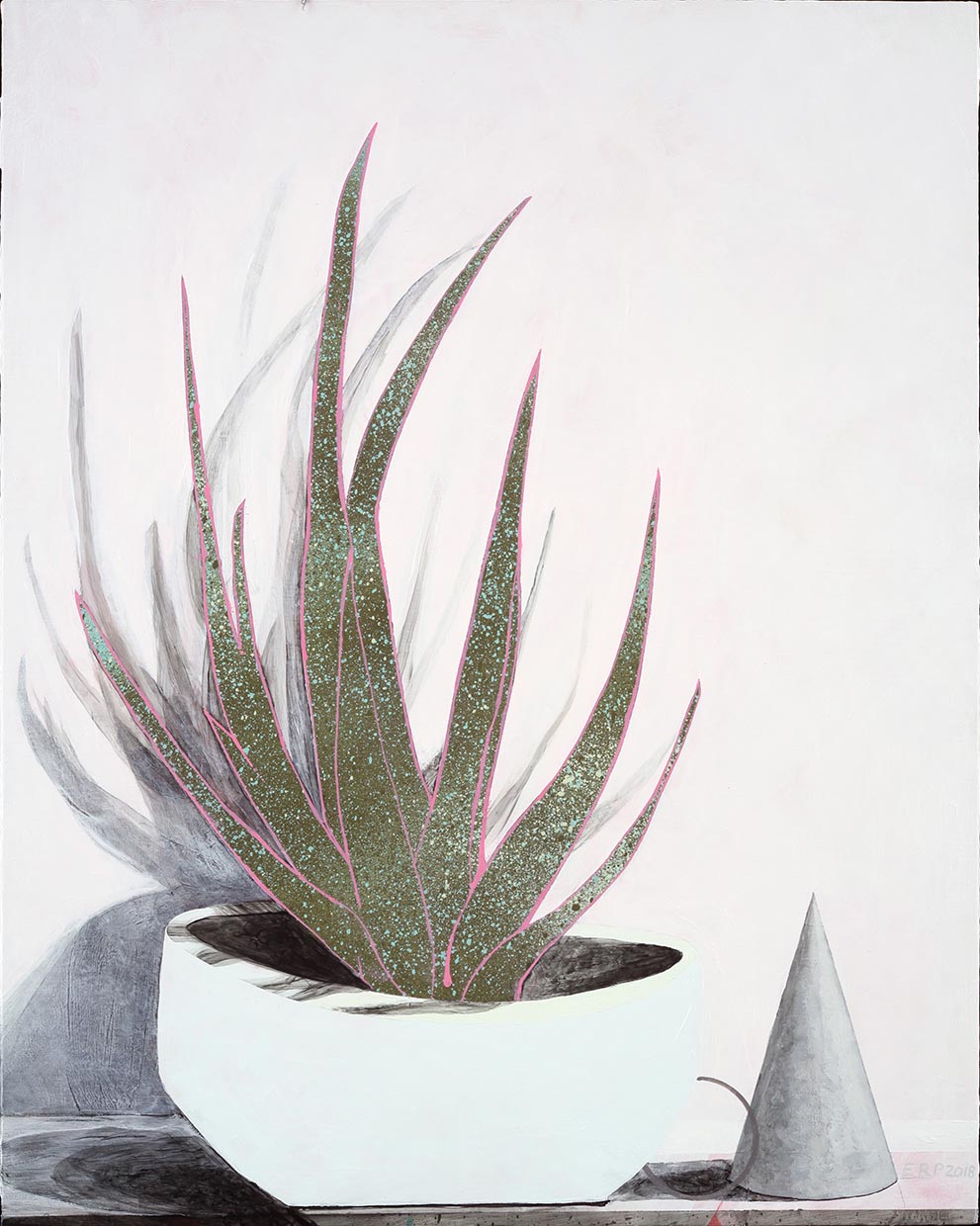
Future Shock, 2019, Acrylic, spray paint, paint marker on panel, 20 x 16
Describe a day in your studio. What is your schedule like, how do you divide your time?
I usually arrive and unpack any books or new music that I bring to the studio, pro tip I like to bring new episodes of podcasts or albums to the studio as a sort of extra incentive. I settle in and begin with some warm up drawing. I usually have a couple of different exercises to get focussed but sometimes this is just time to look at and work up some new ideas in my sketchbook. Then I move on to making in earnest. I generally try to spend the majority of my time focussed on one medium at a time and I like to spend at least four hours dedicated to working on either painting, drawing, collage or sculpture. When I am working toward an exhibit I stay focussed on that plan and timeline, however if I am in between exhibitions I allow myself a bit more freedom to switch things up and follow whims of curiosity, both in terms of image and medium.
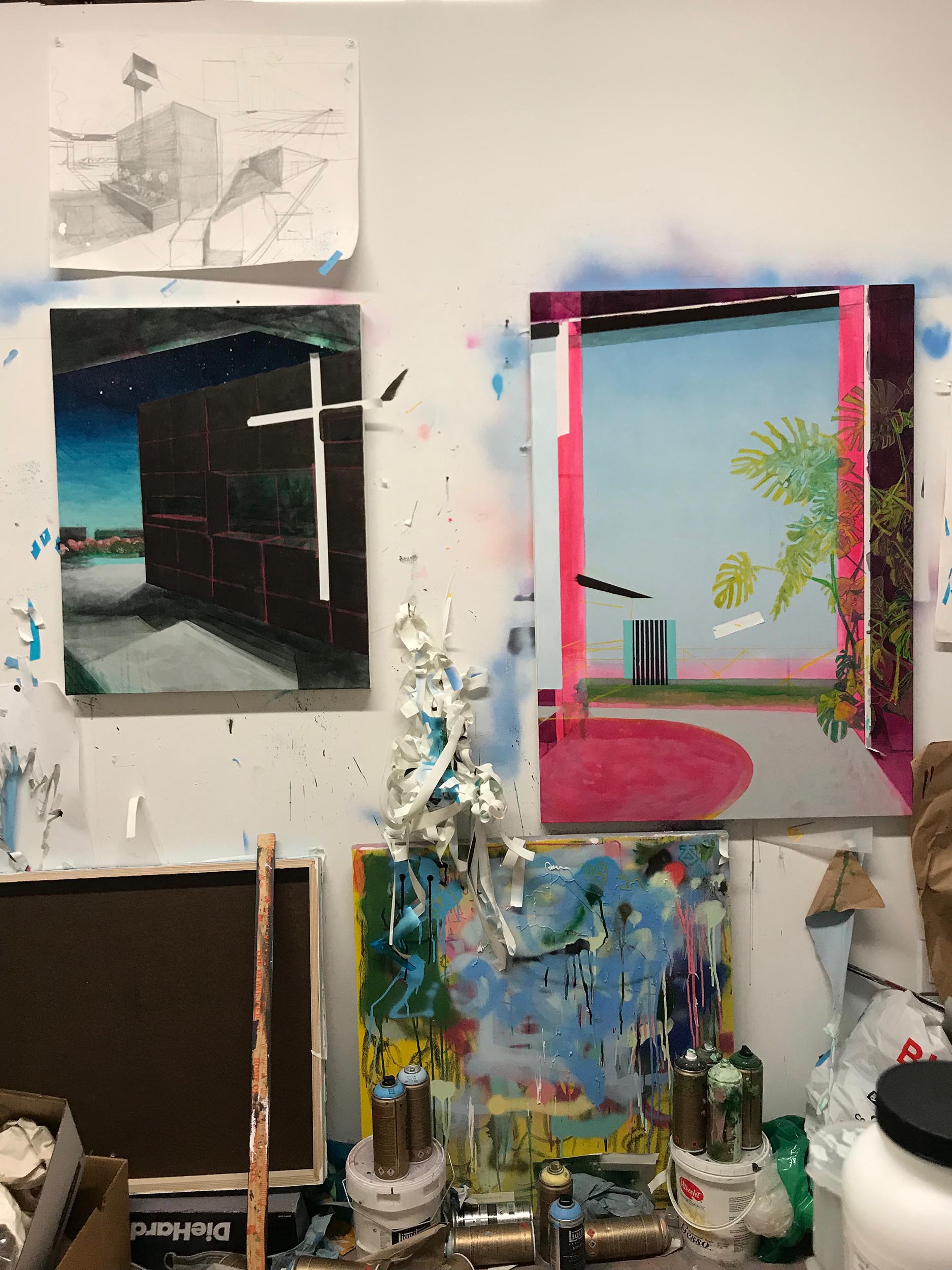
Parra's studio, 2019

Parra's studio, 2019
Has your practice been influenced by technological changes/advances either online or through social media?
Instagram has become an invaluable tool for sourcing images. As part of my process I collect images to refer to as I work from memory so Instagram has become a great source for photos. Additionally Instagram has been an amazing resource for seeing paintings I have never seen before by painters I am studying. Additionally I have a projector that I can hook up to my phone so if I need to make something larger I can just make a drawing, take a photo of it and enlarge it at will.
Given our current cultural climate, the importance of artists is undeniable, we need them now more than ever. Do you find the social responsibility intimidating at all or does this help fuel your work?
This social responsibility has been an important part of the job of being an artist as I have understood it, from the beginning. I have always felt that this was one of the most important aspects about what I do. So this question is inspiring because I agree, we need artists now more than ever. From American/World political policy to global warming there are numerous issues that artists are best suited to tackle. It is an idea that I impart upon my students as well. To take this seriously and invest this in the studio work.
I have been making art ever since I could hold a pencil
Erik Parra
What are some of the challenges you have experienced in your practice?
One of my biggest challenges has been the rampant blood sport that real estate is, in San Francisco. I have been displaced from almost every studio I have ever had in the city. I am fortunate to have found a pretty secure spot right now but there was a time when I had to move studios almost every year.
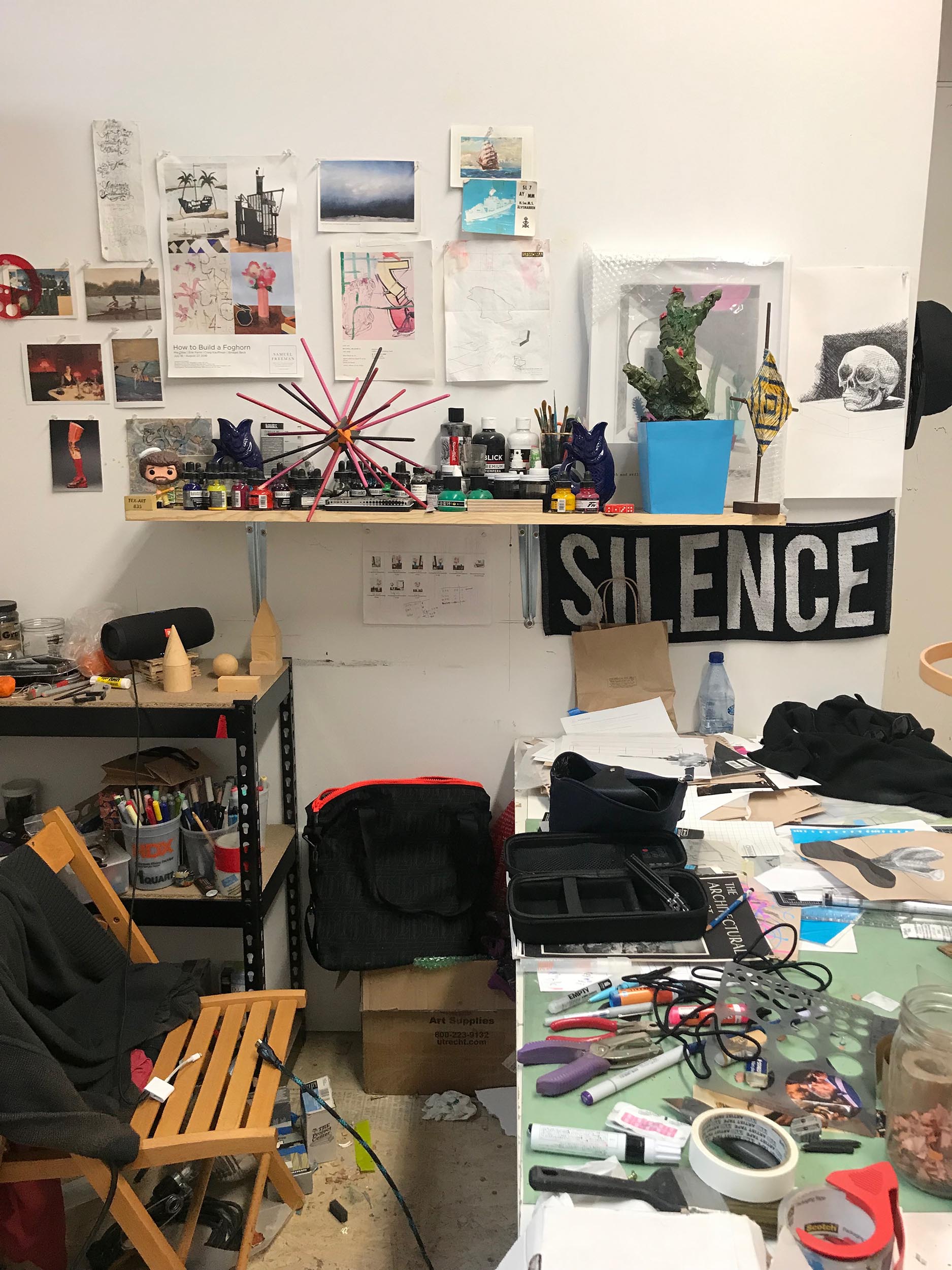
Parra's studio, 2019
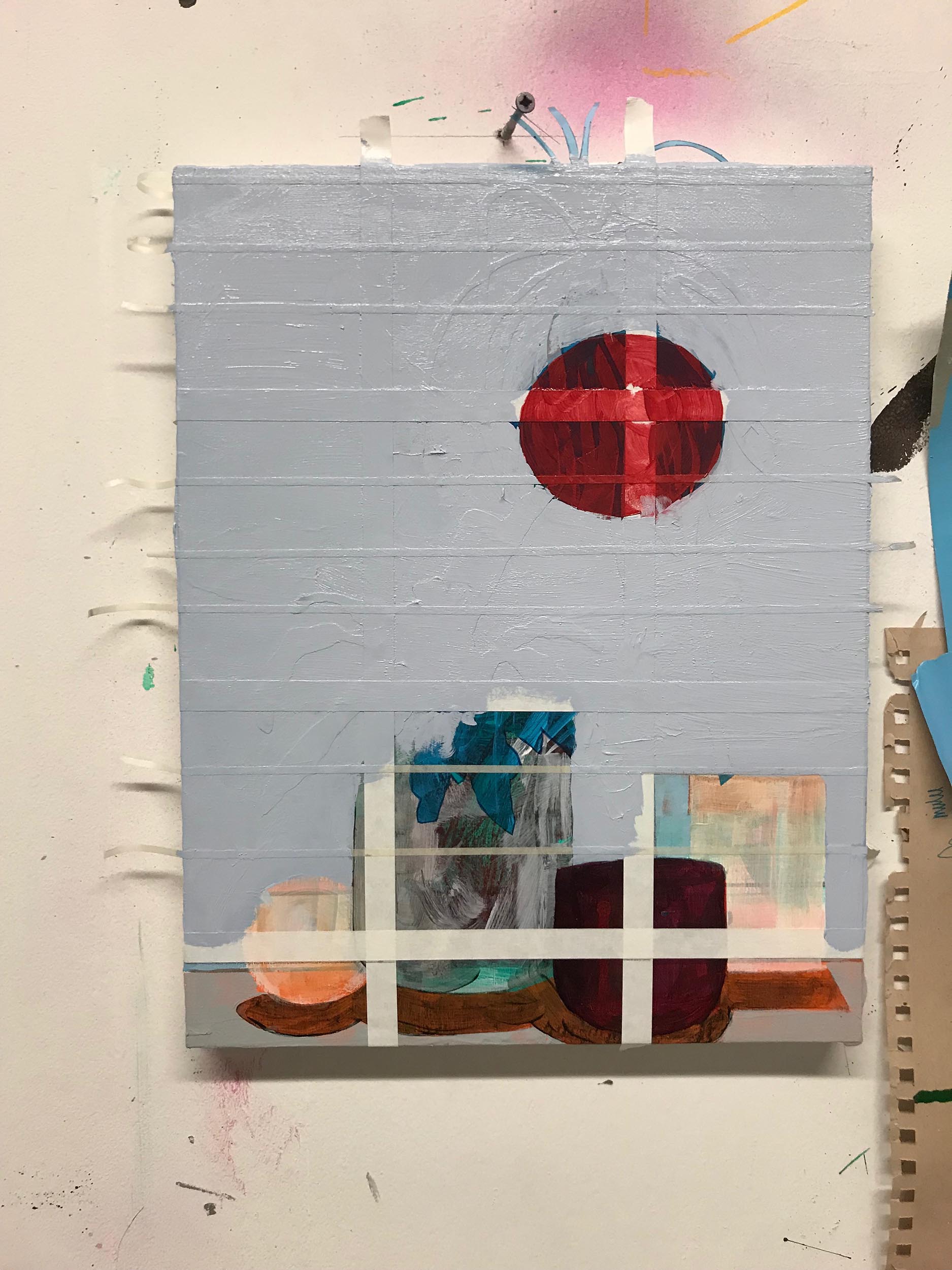
Parra's studio, 2019
What are some of the most rewarding aspects of art making?
Making real connections with complete strangers over a conversation inspired by an image or installation or piece of work I made is probably the most rewarding. This back and forth is really the very important and I cherish each and every interaction. I am also rewarded by talking about my work and process and life as an artist to art students, I really appreciate the thought provoking questions many of them ask and I generally enjoy helping young artists forge a path of their own.
What is one art related book and non-art related book that you recommend other artists read?
This one is hard, just two books? Art/Work – Everything You Need to Know (and Do) As You Pursue Your Art Career, by Heather Bhandari, and Jonathan Melber, has been an invaluable resource for me and I recommend it to everyone. Highly. Poetics of Space, Gaston Bachelard. It is a great mediation on poetry, art and consciousness couched in rich, mysterious imagery.
Where do you go to discover new artists?
Instagram, Podcasts, MFA Programs and Galleries. In that order.
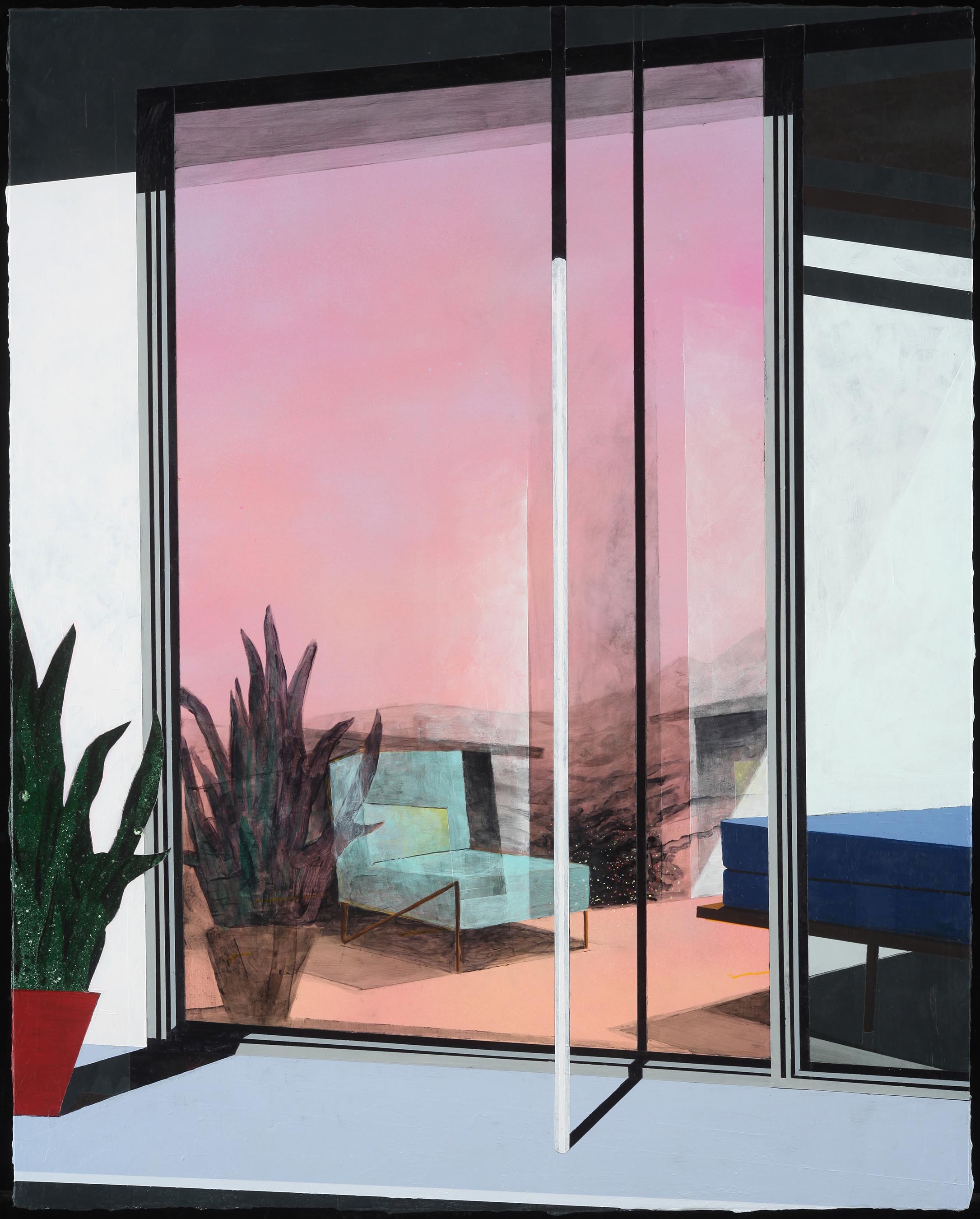
Sunset Reflection, 2019, Acrylic, spray paint, paint marker on canvas, 30 x 24 inches
How did you get your first exhibition?
My first exhibition, outside of school, came about through an open call. I had just moved to Brooklyn after graduate school and I responded to an open call published by a reputable gallery looking for Brooklyn based artists and the rest as they say, is history! This led to other opportunities and I looked for other open calls at equally reputable venues with which to apply.
What methods do you find most productive in promoting your work?
I use a couple of different social media venues like Facebook and Instagram, which is my favorite. I also have an email newsletter and website with a blog-like news page that is searchable and that folks can subscribe to.
What advice would you give to your younger self? How about to other artists? Are there lessons you have learned through your commitment to your practice which you think might be of value to others?
To my younger self and to younger artists I would stress the importance of maintaining and growing professional friendships. I went to undergrad before the advent of social media and I did not maintain those relationships and really wish that I had a system in place like social media with which to keep in touch. Additionally, to younger artists I always stress the importance of taking writing courses and finding every possible way of keeping yourself in the studio, making work. Just keep making. There can be no exhibitions and the work cannot grow if you do not keep making.
Learn More
Erik Parra was one of the inaugural recipients of the Hopper Prize. To learn more about his practice and background:



































































